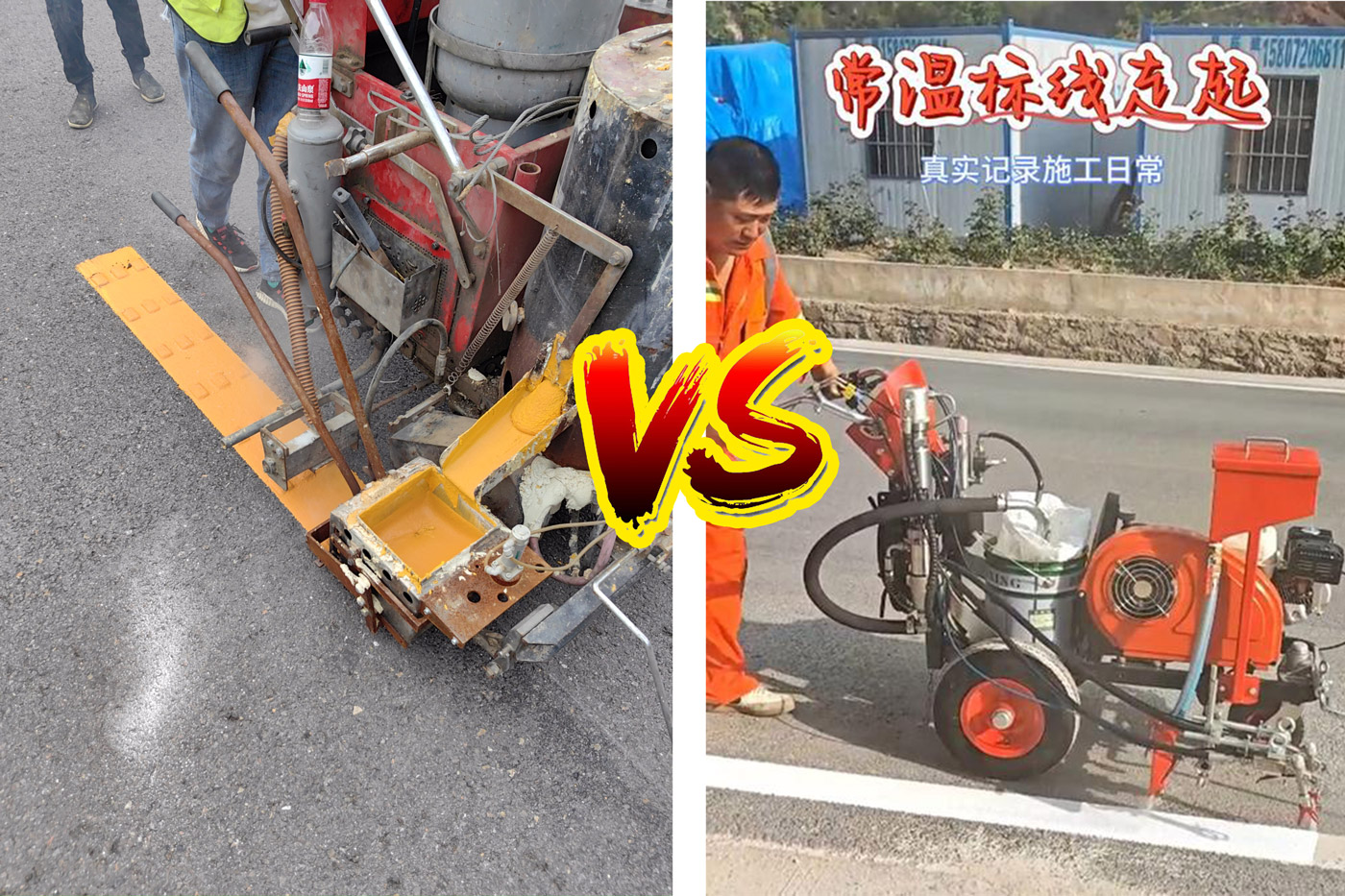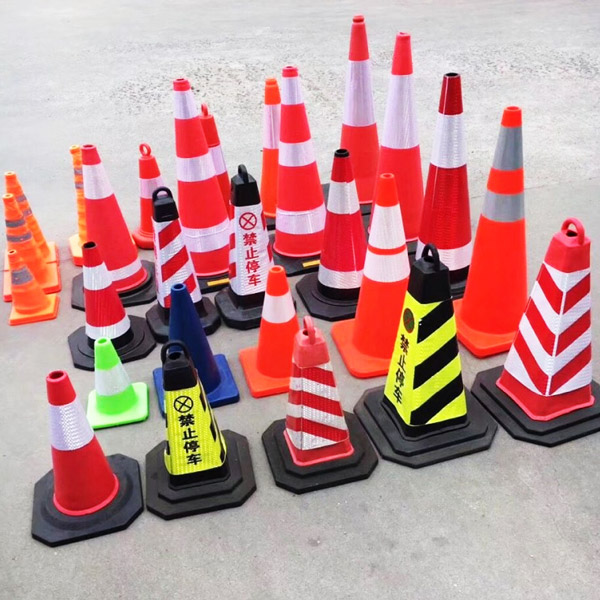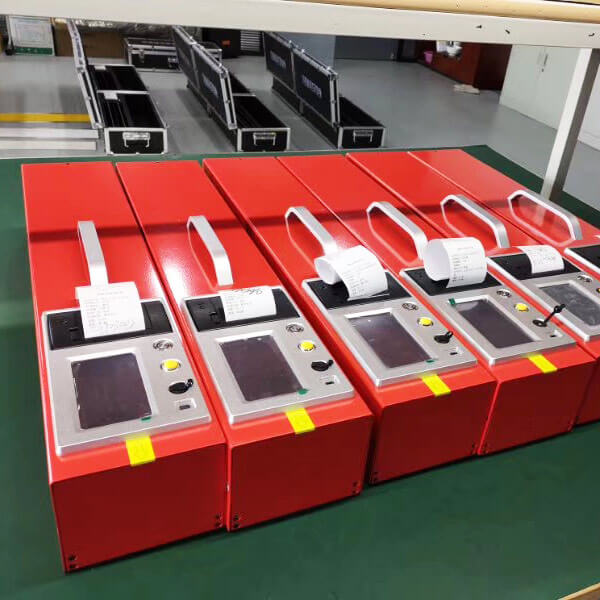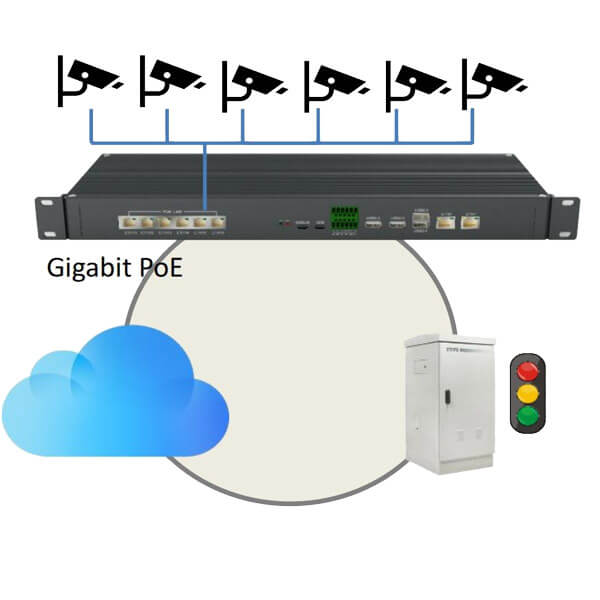Thermoplastic vs. Cold Paint: Key Differences in Road Marking Applications
Differences Between Thermoplastic and Cold Paint for Road Marking
When it comes to road surface markings, choosing the right material is essential for durability, visibility, and cost-efficiency. Two of the most widely used types of paint are thermoplastic road marking paint and cold solvent-based road marking paint. Although both serve the same basic function, they differ significantly in terms of composition, application method, performance, and lifespan.
1. Composition
Thermoplastic paint is a mixture of synthetic resins, pigments, fillers, and glass beads. It comes in solid powder form and must be heated to 180–200°C before application. Once cooled, it hardens into a tough, wear-resistant line.
Cold paint, on the other hand, is a liquid mixture of acrylic or alkyd resins, solvents, and pigments. It does not require heating and can be applied directly using a spray machine at ambient temperature.
2. Application Process
Thermoplastic requires specialized equipment such as hot-melt kettles and thermoplastic applicators. It involves surface preparation, heating, and line extrusion. This method ensures strong adhesion to the road and a thicker line profile.
Cold paint is easier to apply and ideal for temporary markings or small-scale jobs. It’s often used with airless spray machines and dries by solvent evaporation.
3. Durability and Weather Resistance
Thermoplastic markings are much more durable, lasting 2–5 years depending on traffic and climate. They resist abrasion, rain, UV exposure, and oil better than cold paint. Because of their thickness (1.5–3 mm), they remain visible longer.
Cold paint typically lasts 3–6 months under moderate traffic. It fades faster and is more likely to chip or wear away in wet or high-temperature conditions.
4. Cost and Efficiency
Cold paint is cheaper upfront and faster to deploy. However, its shorter lifespan often results in higher long-term maintenance costs.
Thermoplastic has a higher initial cost due to equipment and material, but its extended service life often makes it more economical over time for high-traffic areas or permanent installations.
5. Visibility and Reflectivity
Thermoplastic markings typically include pre-mixed or drop-on glass beads, offering superior nighttime reflectivity. Raised profiles or convex types can also provide tactile vibration alerts for drivers.
Cold paint may contain glass beads but often has lower reflectivity and is less visible at night or in wet conditions.
Conclusion
Thermoplastic and cold paint each have their place in road marking. For long-lasting, highly reflective markings on highways or busy urban roads, thermoplastic is usually the better choice. For low-cost, short-term applications or areas with light traffic, cold paint may be sufficient. Understanding these differences helps contractors and city planners make informed decisions based on project needs and budgets.
Our Thermoplastic Road Marking Paint
As a professional manufacturer, we supply high-quality thermoplastic road marking paint that complies with international standards such as AASHTO M249 and BS 3262. Our products are trusted by contractors and government agencies across Africa, Southeast Asia, and the Middle East.
| Item | Specification |
| Color | White / Yellow / Customizable |
| Package | 25kg per bag or 1000kg jumbo bag available |
| Minimum Order Quantity | 10 tons |
| Delivery Time | 30-45 days |
| Trade Terms | EXW, FOB, CIF, DAP |
| Payment Terms | T/T, L/C, or negotiable |
| Price Range | USD 260 – USD 700 per ton |
We provide free samples for testing and offer OEM services with customized packaging and branding. Contact us today to get a quotation or technical support for your road marking project.
Global Distributor Wanted
We are actively looking for long-term distributors and agents worldwide. If you are in the road construction, traffic safety, or infrastructure industry, we welcome you to join our network. Our distributor support policy includes:
- Exclusive Distribution Rights: One distributor per region to ensure market protection.
- Flexible Payment Terms: After stable cooperation, we support a “ship first, pay later” policy.
- Professional Training: Full technical and sales training to support your local operations.
- Online Marketing Support: We assist with Google Ads, SEO, and lead generation for your region.
- Factory Visit & Tourism: Distributors are welcome to visit our factory in China — we will arrange business meetings, factory tours, and sightseeing trips.
If you're interested in becoming our exclusive distributor in your country or region, contact us now and let’s build a successful partnership together.







